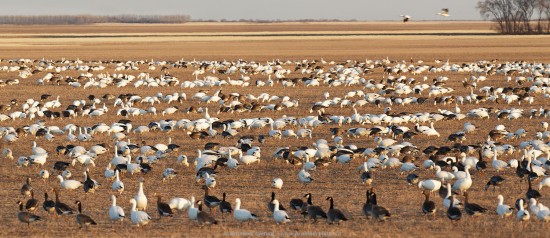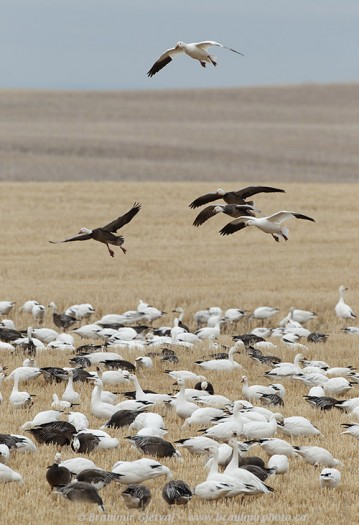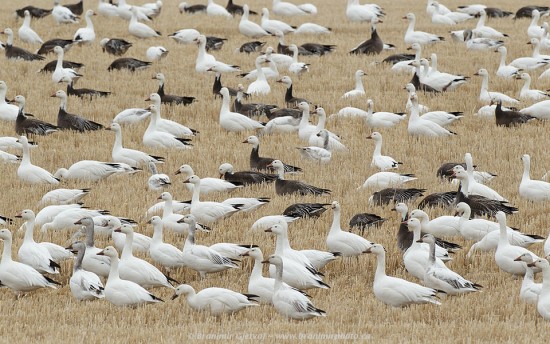A sure sign that spring has arrived on the prairies is the sight and sound of hundreds of thousands of geese that are gathering on the fields and slews across the province. Saskatchewan provides major habitat for breeding birds and migrants that stop to feed and rest during their long trip to breeding grounds further north.
Migratory birds follow numerous routes, guided by natural features such as mountain ranges and major river systems. There are four loosely defined major North American migratory flyways (broad areas in which migration routes are associated with a definite geographic region). Saskatchewan lays in the Central Flyway migratory route, which may also be called “the flyway of the Great Plains” as it includes a large area between the Rocky Mountains and the valley of the Mississippi River. Good spots to observe migrating waterfawl include Quill Lakes International Bird Area, Chaplin / Old Wives / Reed Lakes (pdf document) and Last Mountain Lake.
Over the last few weeks I have had an opportunity to marvel large flocks of geese filling the skies every evening. After a long day feeding on emerging vegetation and spilled grains along agricultural fields, birds gather on their favourite spots where they feel safe from predators. Below are a few images that I took while driving around central Saskatchewan in mid-April of this year. The first image is a composite panorama of two horizontal photographs. I have not used panorama option for wildlife images that often.

White-fronted, Snow and Canada geese gather to spend the night after a long day of feeding in nearby fields
The photograph of this Snowy Owl was taken north of Kyle. Rare Snowy Owls can still be seen in southern and central Saskatchewan in late May or early June, lingering far away from their normal breeding grounds.




